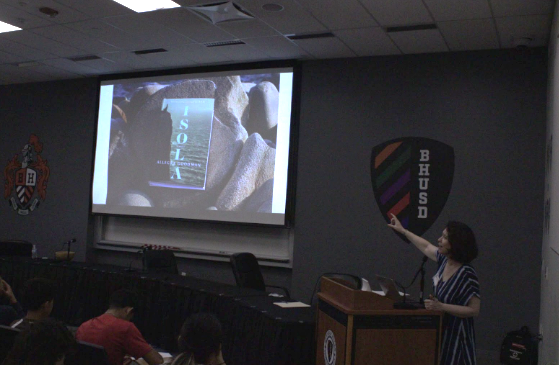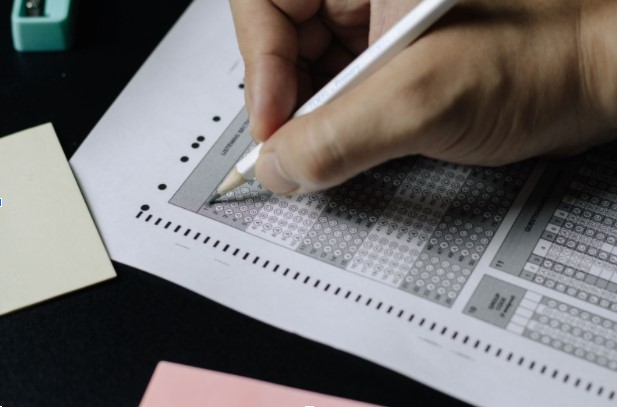Emma Newman co-editor-in-chief
The College Board announced that the SAT will be strictly digital by 2024, a significant change from the test’s traditional Scantron format. While testing will still be held in person, students will use their own or school-provided devices for the test.
The new test will be shorter, lasting two hours instead of the usual three, and will allow students to use their calculators for both math sections. The College Board also gave the tests an autosave function so that students can reconnect if they have Internet issues without being penalized.
Another new feature of the exam, according to the College Board, is that it will feature adaptive testing, meaning that the tests will change in difficulty based on student responses. The College Board predicts that the test will also be easier to administer and allow students to get their results faster.
College counselor Casey Barneson believes that these changes will have a “really positive” effect on students planning to take the SAT.
“I think that it’ll help just in the sense that it provides more options,” Barneson said. “The system [also] is easier. It seems more efficient. You’re not sitting in a classroom bubbling an information seat for an hour before you begin the test.”
Freshman Sarah Zhang, who plans to take the SAT as a junior, agrees that the test is “more efficient, in a way” than the previous test. However, she also believes that the new SAT has some faults.
“There’s some pros to it because it’s right online [and] obviously more accessible to everybody. I also like how they shortened the reading passages so for the slower readers,” Zhang said. “But, I also feel like that takes away some of the difficulty and some of the ways the SATs were able to distinguish different student’s strengths and weaknesses. So, it’s pros and cons.”
Zhang doesn’t think that her test prep plans will change in any way because of the SAT’s new format. According to Barneson, besides practicing online, preparing for the new test won’t require students to stray too much from traditional test-taking strategies.
“I think when you’re preparing for any test it’s all still practicing. I think getting to know the platform, especially when you feel anxious going into any testing environment, [is important.] Little nuances, like logging in when you’re feeling anxious about getting a good score, for example, can always cloud the simplest of gestures. And, I usually recommend students prepare for SATs consistently two to three months before the actual test date,” Barneson said.
While the new test coincides with a period where college admissions rely less and less on standardized tests, Barneson doesn’t think that the new test will negatively affect the test’s worth in any significant way.
“The colleges have, for a number of years, begun questioning the value and the equity in these exams for quite a bit of time. Colleges have always questioned these exams, but they still are of value to a lot of universities,” Barneson said. “But, with a new platform, I don’t think it’s going to devalue the exam in any way. What I think it will do is [that] the colleges that still value it will use it.”































